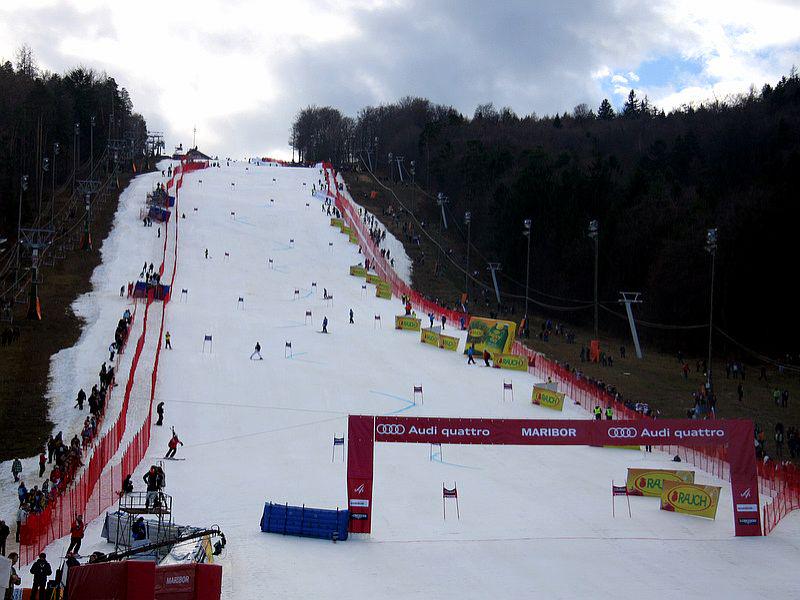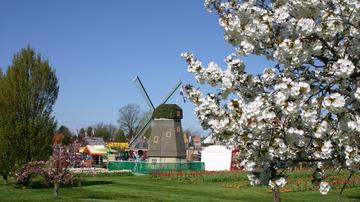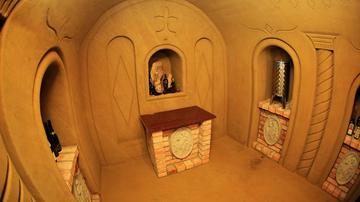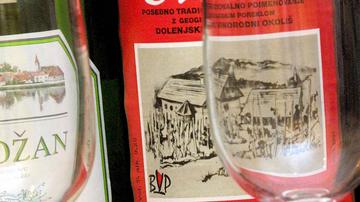
In the early 1960s, Dušan Senčar had a dream: to bring international women’s skiing to the town of Maribor. Many dismissed the suggestion out of hand. Maribor, after all, was far from the ski resorts of the Slovenian Alps, and had no tradition of ski races. The area’s only ski slopes, a part of the Pohorje range, were at a low altitude, close to downtown and the surrounding vineyards. This was no place for top-level skiing, the critics scoffed; major competitions belonged in Alpine resorts.
But Dušan Senčar was not the type of person to give up easily. An attorney, a skiing instructor and a coach, he had been convicted in a postwar Communist show trial and even spent some time as a political prisoner on an isolated Adriatic island. He was now determined to make the international race in Maribor a reality. Because he had strong connections with officials at FIS, the International Ski Federation, he was able to convince that the town could carry out the event.
And so, the first Golden Fox competition, as the race was titled, took place in February, 1964. The beginnings were anything but auspicious. In an era when many skiers traveled by train and television coverage was non-existent, attendance by top skiers was anything but a given. Senčar even embarked on a European tour in order to convince top women skiers that they should take part in the event. But FIS finally came to the rescue by requiring all skiers to attend at least one race in all Alpine countries. Since the event in Maribor was Yugoslavia’s only women’s race, attendance became mandatory.
The 1964 Golden Fox competition consisted of two slaloms. (The snow conditions were not good enough for a giant slalom race to be organized.) Both events, which took place in front of an audience of 5000, were won by Marielle Goitschel, an 18-year old skier from France who had just won two gold medals at the Innsbruck Olympics and impressed the crowds in Maribor with her passion and spirit. For years, she was remembered not just as the competition’s inaugural winner, but also for her unique way of celebrating her victories: While everyone gathered at a gala dinner in her honor, she decided that she was too tired to attend, so she just stayed in her room and knitted. Meanwhile, the second-placed slalomist, Patricia Du Roy de Blicquy, was named the first “Miss Pohorje,” as the most attractive skier taking part in the competition.
Much has changed about the Golden Fox competition over the past fifty years. In 1967, FIS introduced the skiing World Cup and Maribor became an established race on that prestigious circuit. The advent of television brought the event into living rooms across Europe and beyond. Top skiers began to visit Maribor because they want to take part, not because they were forced to. Increased awareness of animal rights also meant that the winning skiers no longer received real fox furs -- the traditional gift of Golden Fox races --, but were given golden fox-shaped broaches instead.
But one of the most dramatic changes was that Slovenian skiers, who were modest performers in the first Golden Fox competitions, later become very successful. In the past few decades, they have won either slalom or giant slalom races eight times.
But weather problems affecting the Golden Fox events – primarily the lack of snow at Maribor’s low altitude – have remained a constant through the years. Since the 1960s, the Slovenian Alpine resort of Kranjska Gora has had step in for Maribor on six different occasions.
As for Goitschel, the first winner of the Golden Fox: She retired after winning no fewer than 14 medals at various Olympics and World Championships – nine of them gold. She later opened a skiing school in her native Val d'Isère, and devoted her time to various environmental causes, but now spends most of her time on the Mediterranean island of Corsica, far from the snowy Alps that made her famous.


































































